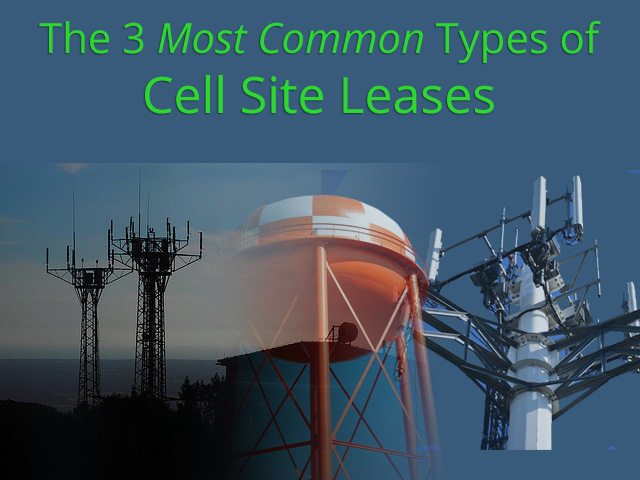Individuals, corporations, churches, cities, schools, and other types of property owners throughout North America are approached every day to discuss the possibility of placing some sort of telecom equipment on their property.
The following is a summary of each type of cell site lease and the pros and cons of each, which can factor into the amount of cell tower rent one should receive under such agreements:

Cell Tower/Ground Leases
Cell tower leases are basically leases for ground space, and, due to the potential for multiple subtenants using such space, can have greater revenue potential than other types of agreements. Ground leases have a higher profit potential than rooftop leases.
The areas occupied under these ground leases can range from a few hundred square feet to over fifteen thousand square feet of space occupied. The structures installed in these areas can range from 50-60 feet in height to several hundred feet. They also can be simple monopole structures to lattice towers or stealth towers that are disguised as trees, flagpoles, clocks or other masking structures.
Rooftop Antenna Leases
Rooftop antenna leases are presented to property owners for various reasons and take many forms. The following are the most common types of rooftop leases:
- Antenna Arrays – Antenna array installations are the most popular rooftop leases and are usually found in urban areas with above-average population. These leases usually allow for the installation of one or more antenna arrays to be installed on the rooftop, with total antennas installed ranging from 3 to 12 total antennas being installed.
- Small Cells – Small cell equipment are becoming more and more prevalent due to wireless carriers like AT&T, Verizon, Sprint and T-Mobile’s need to meet ever-growing wireless data capacity needs. Small cells are usually a fraction of the size of the afore-mentioned antenna arrays and only take up a fraction of the space that other installations need. The rooftop space required ranges from 30 to 50 square feet. While the amount of space used by a wireless carrier is nominal, it does not mean the value they derive is, and, as a result, a property owner should not be lured into the sales pitch that they should only accept a small rental amount for the use of their property.
- Satellite Dishes – In certain highly populated areas, rooftop owners are asked to install satellite dishes on their building for the purposes of internet, television, radio or other types of media services. A satellite dish is a different animal than a telecom lease and does not carry the same types of revenues that you would receive from a wireless carrier; however, they do have a lot of the same hazards that a cell site lease does, so a property owner should be careful.
Structure Leases
Structure leases mostly include the use of water towers, smokestacks, utility poles, billboards or other similar types of structures. Ultimately, a wireless carrier’s ability to lease space on an existing structure can be the most economical avenue to fill their wireless needs in certain areas.
These structures also usually provide a faster track to get governmental approval due to the nature of the existing structure and limited impact on the surrounding community.
Property owners should, again, be careful to not fall for the lure of “Easy Money” that will be promoted by a wireless carrier. This often leads not only to a property owner getting paid less cell site rent than they should be getting, but also agreeing to terms that lead to significant expenses and liability exposure due to not being familiar with the wireless industry and the long-term nature of cell site leases.
Please feel free to contact us today to get more information about any type of cell site lease and how to get the best overall terms.



